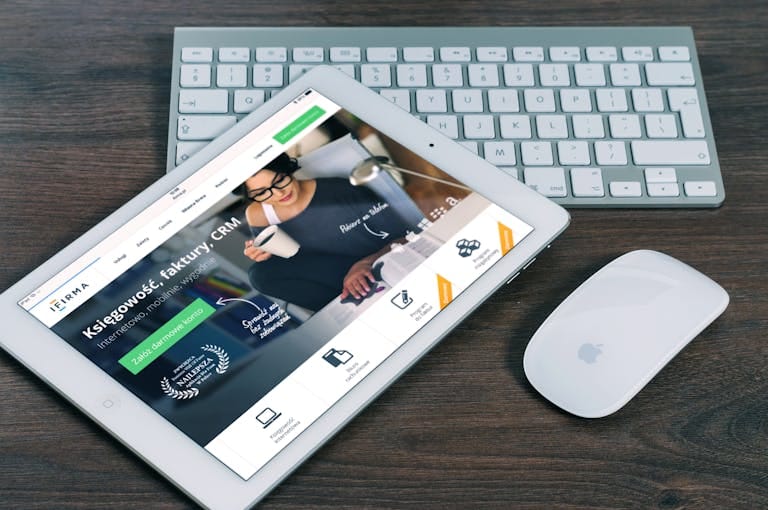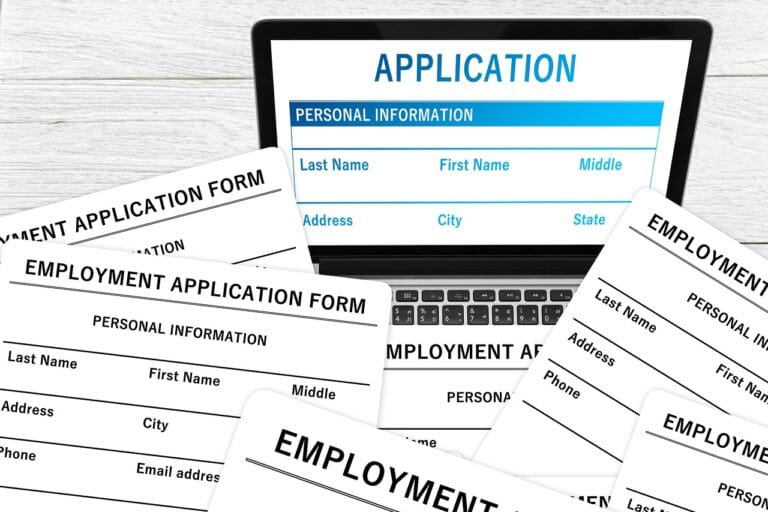Hybrid vs. Fully Remote: Which Works Best for You?
In the evolving world of work, two models dominate conversations: Hybrid and Fully Remote. While both promise flexibility, they cater to different priorities, lifestyles, and organizational goals. Choosing between them isn’t simply about location—it’s about productivity, culture, and work-life integration.
Summary:
Hybrid and fully remote work each offer unique benefits and challenges. This FAQ answers the most common questions to help you choose the right setup for productivity, flexibility, and work-life balance.
Contents: What You’ll Learn
What is Hybrid Work?
Hybrid work blends remote and in-office schedules. Employees might spend two to three days in the office and the rest working from home. This setup appeals to companies wanting to preserve face-to-face collaboration while embracing flexibility.
Pros:
- Collaboration Boost: In-person days foster creativity, quick decision-making, and spontaneous problem-solving.
- Balanced Routine: Workers can structure their week around both focused home time and in-office networking.
- Reduced Burnout: Breaks from home isolation can support mental well-being.
Cons:
- Commute Costs: Even reduced commuting still adds expenses and time.
- Coordination Complexity: Aligning team schedules can be tricky.
- Potential Inequity: Office presence may inadvertently lead to “proximity bias” in promotions or visibility.
What is Fully Remote Work?
Fully remote setups eliminate the office entirely, allowing teams to work from anywhere—whether a home office, coworking space, or another country.
Pros:
- Location Freedom: Live and work anywhere, opening access to global talent.
- Cost Savings: No commuting or office-related expenses.
- Productivity Gains: Many remote workers report fewer distractions compared to office life.
Cons:
- Isolation Risk: Lack of in-person contact can affect morale.
- Time Zone Challenges: Distributed teams may need asynchronous communication.
- Self-Discipline Required: Success depends on strong personal time management.
Market Trends and Data
According to Gallup (2024), 54% of U.S. workers in remote-capable roles prefer hybrid schedules, while 27% want to work fully remotely. FlexJobs’ annual survey echoes this, showing remote listings growing across industries like tech, marketing, and healthcare. Reddit discussions reveal a clear generational split: younger workers lean toward hybrid for career development, while experienced professionals often prefer the autonomy of full remote.
Google’s return-to-office push sparked debates on People Also Ask (PAA) queries like “Is hybrid work better for productivity?”—suggesting strong search interest and buyer intent around remote tools, coworking memberships, and flexible job boards.
Who Should Choose Hybrid?
Hybrid is ideal for:
- Teams needing regular brainstorming or hands-on collaboration.
- Roles requiring physical equipment or secure on-site systems.
- Employees valuing in-person mentorship.
Example: A creative agency might thrive on hybrid schedules, meeting twice a week to storyboard campaigns, then developing assets independently from home.
Who Should Choose Fully Remote?
Fully remote suits:
- Companies with global, asynchronous teams.
- Knowledge workers seeking deep focus without office interruptions.
- Individuals prioritizing geographic independence.
Example: A software startup hiring developers worldwide can leverage a fully remote model to cut office costs and widen its talent pool.
Financial Impact
Hybrid workers save on commuting but may still face city housing costs. Fully remote employees can relocate to lower-cost areas, potentially boosting disposable income. From an employer’s perspective, remote work can reduce office leases and utilities, while hybrid may justify smaller, flexible office spaces.
Culture and Employee Engagement
Hybrid offers the advantage of building culture in person but risks creating two employee “tiers.” Fully remote requires intentional culture-building through digital platforms, regular check-ins, and virtual events.
The Verdict
There’s no universal winner—hybrid and fully remote both deliver value, but the right choice depends on company goals, employee preferences, and industry norms.
If you’re exploring flexible roles, check out FlexJobs for vetted remote and hybrid opportunities, or browse Remote Rocketship for startup-focused positions.
Key takeaway: Assess your needs for collaboration, independence, and lifestyle flexibility before committing.

Productivity, Collaboration, and Culture: How Hybrid and Remote Models Stack Up
In Part 1, we unpacked the fundamentals of hybrid and fully remote work, looking at how they operate and what they mean for both employers and employees. In Part 2, we’ll dive into a comparative breakdown — looking at productivity, collaboration, company culture, and talent acquisition — so you can decide which model aligns best with your career or business goals.
Productivity: Context Matters
Hybrid:
- Offers focused work-from-home days but can be disrupted by commute and office distractions.
- Studies from Harvard Business Review show that hybrid models can boost output if in-office days are strategically aligned with collaborative work.
- Downside: switching between environments can cause “context switching fatigue,” where momentum is lost during transitions.
Fully Remote:
- Eliminates commute, giving more time for deep work.
- Owl Labs research indicates fully remote employees work longer hours but also report higher burnout risk.
- Potential productivity dips if home environment lacks proper setup.
Collaboration: Physical vs. Digital
Hybrid:
- In-person meetings can resolve complex problems faster.
- Encourages spontaneous discussions that spark innovation.
- However, can create a “two-tier culture” where remote workers feel left out of key decisions.
Fully Remote:
- Relies on digital collaboration tools like Slack, Zoom, and Asana.
- Requires intentional communication protocols to prevent misalignment.
- Remote-first companies like GitLab thrive by documenting everything, ensuring all employees have equal access to information.
Company Culture: Engagement Challenges
Hybrid:
- Face-to-face time can reinforce relationships and company loyalty.
- Risk of favoritism towards in-office staff.
- Culture becomes location-dependent if leadership fails to integrate both groups.
Fully Remote:
- Culture must be deliberately crafted through virtual events, async check-ins, and recognition programs.
- Buffer’s State of Remote Work survey shows remote employees value flexibility over perks, making culture less about physical spaces and more about trust.
Talent Acquisition & Retention
Hybrid:
- Attracts candidates who want flexibility but aren’t ready for 100% remote.
- Local hiring pools may still dominate unless the hybrid policy supports relocation.
Fully Remote:
- Unlocks global talent pools, allowing hiring from anywhere.
- High retention among employees who value autonomy.
- Can reduce salary competition in expensive metro areas by tapping into diverse markets.
Decision Framework: Which Is Better for You?
- Evaluate Your Role: If it’s highly collaborative, hybrid may offer faster decision-making. If it’s independent and project-based, remote may be more efficient.
- Consider Your Lifestyle: Remote is ideal if you value location independence. Hybrid works if you enjoy occasional face-to-face contact.
- Assess Company Resources: Remote requires strong digital infrastructure; hybrid needs coordinated scheduling and location strategy.
Where to Find the Best Opportunities
Whether you lean hybrid or remote, finding the right fit starts with quality job boards:
- FlexJobs — Curated, scam-free listings for both hybrid and remote jobs.
- Remote Rocketship — Global listings with strong startup opportunities.
Making the Choice: Hybrid vs. Fully Remote in 2025
By now, you’ve seen the pros, cons, and nuances of hybrid and fully remote work models. The truth is, there’s no one-size-fits-all answer—what works best for you depends on your priorities, lifestyle, and career goals. In this final section, we’ll help you make an informed choice and give you resources to take action immediately.
Step 1: Weigh Your Non-Negotiables
Ask yourself:
- Commute tolerance – Can you handle a few days a week in the office, or does the thought make you cringe?
- Collaboration needs – Do you thrive on in-person brainstorming, or are async tools like Slack and Notion enough?
- Work-life boundaries – Does a home office give you more freedom, or does it blur the line between work and personal life?
Write down your top 3 priorities—this clarity makes it easier to filter opportunities.
Step 2: Assess Industry Norms and Career Trajectory
Some industries—like tech, marketing, and content—are friendlier to fully remote setups. Others—like law, healthcare, and engineering—may still lean toward hybrid or in-person.
Also consider your career stage:
- Early career – Hybrid might give you more mentorship and visibility.
- Mid-to-late career – Fully remote can maximize flexibility and geographic freedom.
Step 3: Consider the Financial Angle
- Hybrid perks: Company-covered commuting costs, in-office meals, and easier team networking.
- Remote perks: Potential relocation to a low-cost city while keeping a high-paying role.
- Hidden costs: Hybrid means commuting expenses; remote may require better home office equipment and higher utility bills.
Step 4: Try Before You Commit
If possible, test both setups. Some companies allow a trial period in one model before locking in. Even freelancing or short-term contracts can give you a feel for each style.
Step 5: Use Trusted Job Boards to Find the Right Fit
Here’s where your decision turns into action.
- FlexJobs – A curated platform for remote, hybrid, and flexible jobs. Every listing is vetted to avoid scams and junk postings.
- Remote Rocketship – Specializes in global remote opportunities, from startups to enterprise roles.
Bookmark both—set alerts for your preferred work model and start applying today.
Final Word
In 2025, flexibility isn’t just a perk—it’s a competitive advantage. Whether you choose hybrid for its balance or fully remote for its freedom, the key is to align your work model with your life vision. Use the resources above, test what works for you, and don’t be afraid to pivot as your needs evolve.
Hybrid vs. Fully Remote Work — Everything You Need to Know (FAQs)
What is the main difference between hybrid and fully remote work?
Hybrid work combines in-office and remote days, while fully remote work allows employees to work entirely from any location. The key difference lies in the need for a physical commute and how collaboration is structured.
Which is better for productivity: hybrid or fully remote?
Productivity depends on the worker’s role, personality, and work environment. Fully remote work offers fewer interruptions and more autonomy, while hybrid setups may boost collaboration and team alignment.
How do hybrid and fully remote jobs impact work-life balance?
Fully remote roles typically offer greater flexibility and less commuting stress, enhancing work-life balance. Hybrid roles may offer social interaction and networking opportunities but can introduce scheduling complexity.
What industries hire for hybrid vs. fully remote positions?
Tech, marketing, customer support, and design often offer fully remote roles. Finance, healthcare administration, and consulting tend to lean toward hybrid to maintain in-person client or team interaction.
How can I find high-quality hybrid and fully remote job listings?
You can search curated job boards like FlexJobs for vetted remote and hybrid opportunities or check platforms like Remote Rocketship for niche, startup, and global roles.







